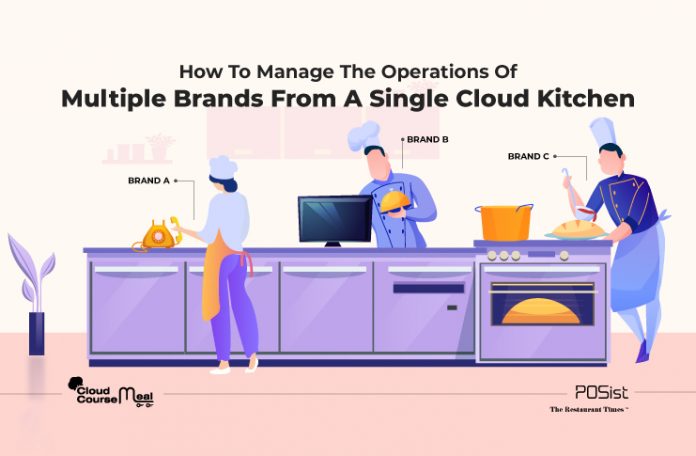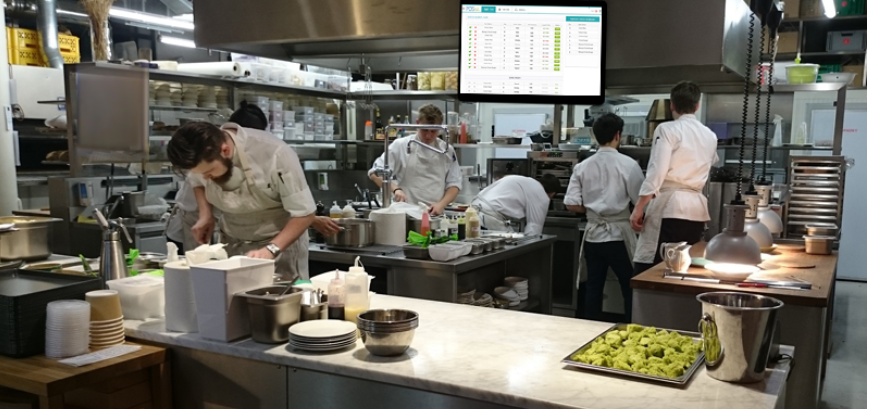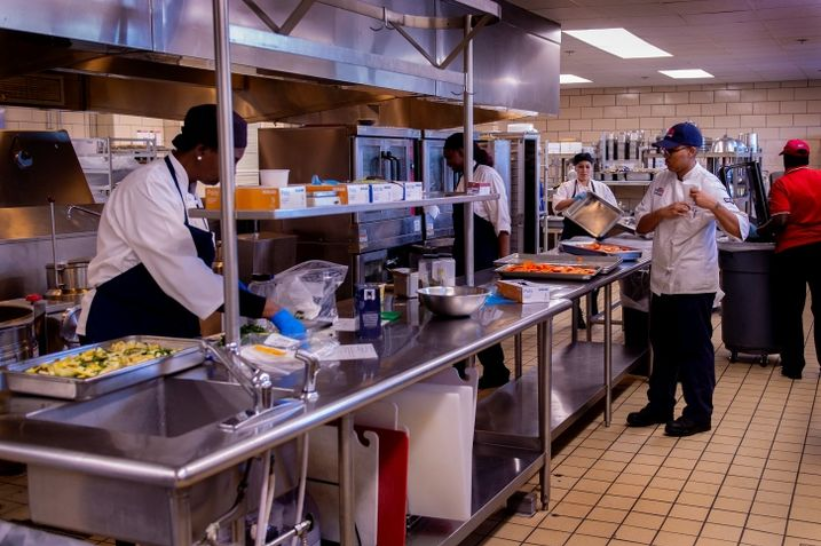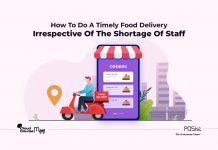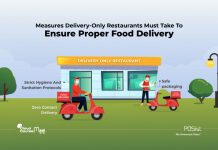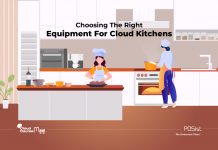The cloud kitchens that took the restaurant industry by the storm have developed to the next level to become a more evolved and robust business model with multiple restaurant brands running from a single kitchen. With cloud kitchens diversifying into many variations and expanding into different verticals, restaurateurs have also felt the need to manage the increased scale of operations with a single click. The wider presence of food aggregators and an increasing number of delivery orders demand more centralization. A restaurant POS is an ideal solution that streamlines the entire operations of the cloud kitchen and enables better control.
How A POS System Streamlines The Operations Of Multiple Brands From One Cloud Kitchen
Running multiple brands from one kitchen significantly lowers operational costs and effectively utilizes inventory and manpower. However, despite working under one kitchen, each brand functions in a different manner. The menu, recipe, total sales, frequency and source of orders, inventory consumption, etc. varies for each brand. But to optimize the entire operations and reach out to more customers, restaurateurs need powerful software that automates and centralizes the entire management of the cloud kitchens.
Let’s look at how a robust POS helps in managing the operations of multiple brands from a single kitchen.
Accepts Orders From Multiple Sources
For the cloud kitchens that have a presence on multiple food aggregators such as Zomato, Swiggy, etc., and also accept orders via hotline numbers, it can be a tough task to manage the orders separately. A robust restaurant POS consolidates orders from all the sources into a single dashboard. It is easier to accept and manage orders from multiple sources on a central platform.
If one customer places an order for Brand A on an online aggregator platform and other customer places an order for Brand B via telephone, it is accepted on a single integrated platform. Orders from multiple brands can be viewed, accepted, and managed centrally through a single consolidated platform.
This feature in the POS system is beneficial for cloud kitchens that have multiple brands or kitchen operators that manage the ordering and delivery of multiple brands. For a hassle-free order acceptance, POS systems also display the full menu of each brand on the central acceptance dashboard and on Kitchen Display Systems.
Manages Orders From Different Brands
Multi-Brand Cloud Kitchen Models have gained popularity for providing multiple cuisine preferences to customers from a single kitchen. But managing orders from different brands that are coming from different sources can be a daunting task. Moreover working on multiple screens for accepting orders of different brands on busy days could lead to errors or mismanagement.
The implementation of POS provides convenience and ease of management to the cloud kitchen operators. With a single interface managing, the orders from different brands don’t require multiple hands. Modern POS systems allow you to create multiple brand tabs on a central panel where you can accept the orders of multiple brands and track the order status. The orders are pushed directly to the integrated Kitchen Display systems which provide a complete overview of all the orders received from different brands to the kitchen staff.
Understands The Inventory Requirement Of Each Brand
The restaurant management software automates the entire inventory management of the cloud kitchen brands. It generates inventory consumption statistics for each brand. The raw material consumption of each brand can be easily tracked. The software also helps you to keep track of all the finished and semi-finished items. Similarly, a comprehensive recipe management feature displays an adequate amount of raw materials that need to be utilized by the kitchen staff.
It ensures that the consistency while preparing the dishes is appropriate and the kitchen staff follows standardized recipe guidelines in all the kitchens. Based on the brand-wise orders received, it keeps a check on the portions of each dish, automatically deducts the stock required for preparing the dishes, and hence optimizes the overall food costs.
Tracks Orders Centrally
Though running multiple cloud kitchen brands from the same kitchen is cost-effective, order management can be a big challenge if it is not managed centrally. Everything from the packaging to delivery time is also highlighted on the central dashboard. Tracking the orders centrally results in improved efficiency, better inventory management, and faster deliveries. There is a single interface where restaurant operators can see the sales and labor data merged together which makes it easier to manage all the moving parts of the restaurant.
Optimizes The Order Preparation And Packaging Time
For Delivery-Only restaurants quality and speed are of utmost importance. Speed is a crucial factor that ensures that your customers receive fresh food quickly. To deliver quality and speed, cloud kitchen operators make sure that the entire order-taking mechanism is optimized timely.
How long does it take to accept the orders? What is the total food preparation and packaging time? Are the customers receiving their orders on time? POS systems improve the entire order-taking operations by identifying the gaps at each level of order preparation. The orders received on the central platform are directly pushed to the KDS which significantly reduces the order processing time.
Through integrated kitchen display systems and analytical reports, you can optimize the overall time taken from accepting the order to finally delivering it to the customers. The entire process which is automated and transparent ensures that there is no mismanagement in the orders and your customers receive their orders on time.
Provides A Complete Sales Overview
With POS systems, you can view detailed reports for analyzing the sales performance of each brand across all regions. Based on the detailed reports, you can have a complete overview of which brand generated the most revenue, which location received the most number of orders, and determine the delivery partner that directed the most number of orders. POS system provides an overall calculation of the total order count and also monitors the canceled orders.
Analyzing data of all the orders also helps in optimizing the time taken to prepare and deliver the dishes. These systems are also effective in maintaining a strong database of customers. With each sale, the customer’s data is also recorded. With this information, the kitchen owners and operators can understand the purchasing habits of customers and convert potential customers into regular customers.
Accepts Telephonic Orders On A Central Hub
A call center panel is an integrated feature of a POS system. The orders that are placed online via the website call center and the orders that customers place on hotline numbers are entered and accepted on a central hub. As soon as the details of the customers are added along with their orders, the central call center panel routes the orders to the kitchens nearest to the customer’s location.
In case if the system doesn’t receive an order directly from the customer, all the order details such as the customer’s information, location can be entered into the system via the call center. The support personnel also have access to a central dashboard where they can track live order status and also provide the information to the customers.
Streamlines Menu Management
Irrespective of the restaurant format, menu management is important for every restaurant. Since the storefront for delivery-only restaurants is through digital mediums, restaurateurs keep a close track of updating the menu regularly.
Say a cloud kitchen operator is managing 5 delivery-only restaurant brands from a single kitchen. Each brand caters to a different cuisine and therefore, there are 5 menus that have to be managed at the same time. A robust POS integrates all the menus of different brands into a single dashboard. You can easily edit and update the menu of different brands from a single dashboard. Based on the availability of an item, you can also choose which items should be displayed on the menu of online food aggregators.
To know more about how a robust POS can help in managing the operations of multiple brands from a single kitchen, Contact Us!


